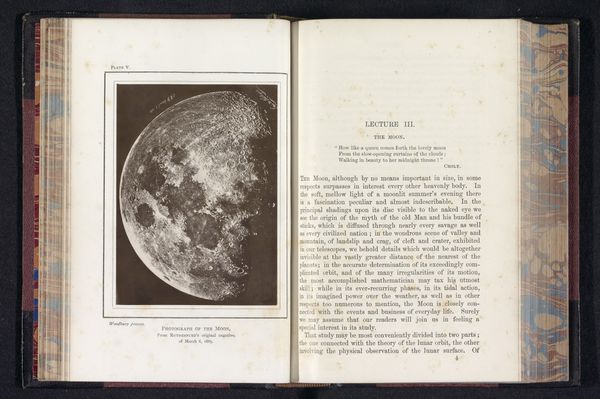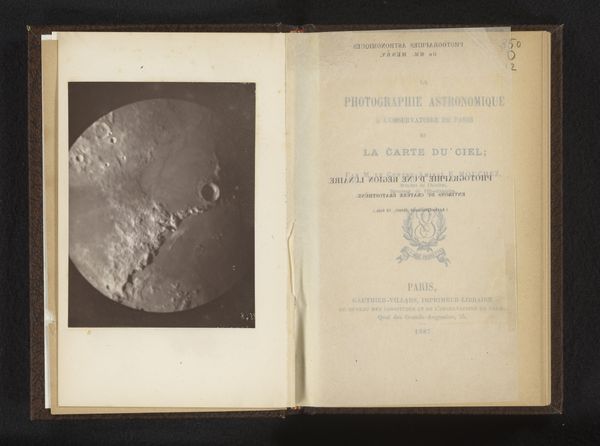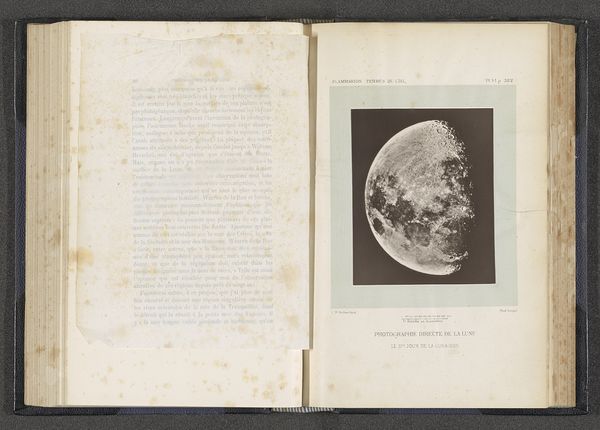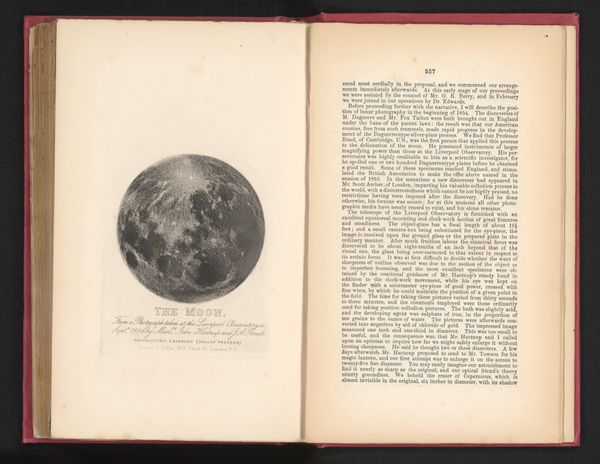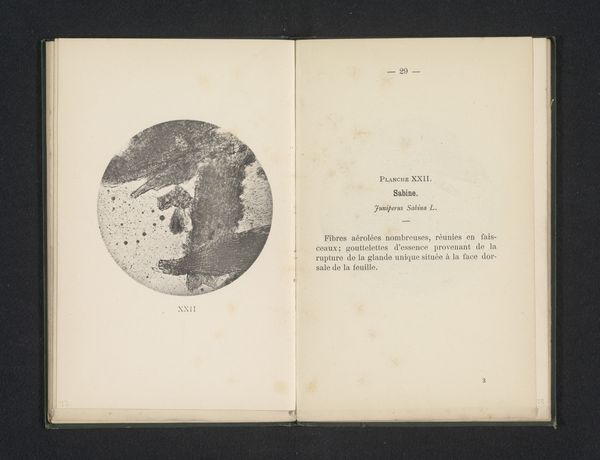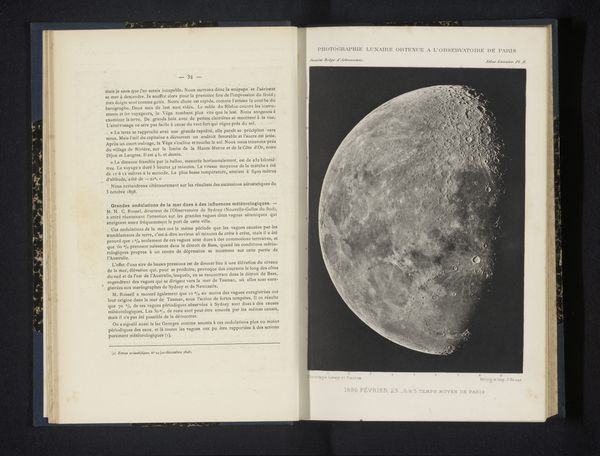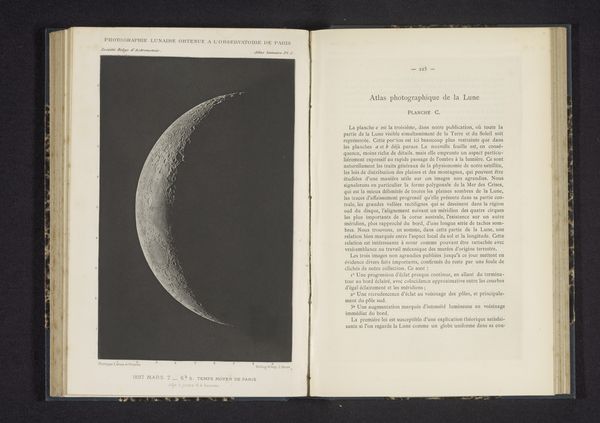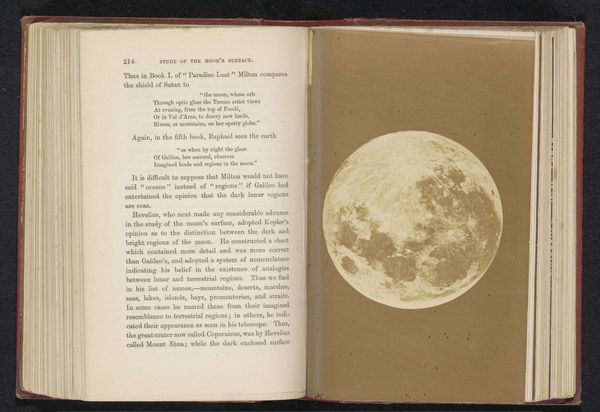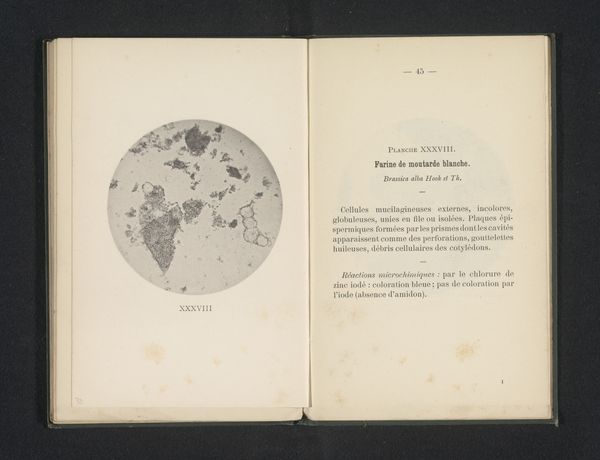
Photographische Afbeelding der Maan Uit: De toepassing der photographie op de sterrekunde, 1862 inv. nr. RP-F-H1845 Possibly 1862 - 1866
0:00
0:00
print, photography
# print
#
landscape
#
photography
#
history-painting
#
academic-art
#
realism
Dimensions: height 128 mm, width 81 mm
Copyright: Rijks Museum: Open Domain
Curator: I’m struck by how starkly beautiful this image of the moon is, almost unsettling. There’s a vulnerability to it. Editor: It’s a rather novel convergence of science, technology, and the book trade. What we are looking at here is "Photographische Afbeelding der Maan", part of Pieter Jan Kaiser’s publication *De toepassing der photographie op de sterrekunde,* which translates to "The Application of Photography to Astronomy." Likely made around 1862, it’s a photographic print intended for scholarly study, bound as an illustration in what looks like an academic thesis. Curator: The texture is incredible. Those craters…you can almost feel the dust, that utter silence. It really shrinks you, doesn’t it? To think someone captured this detail so long ago, painstakingly. There's so much dedicated labor that has been put in the creation of this one single illustration that accompanies Kaiser's study. Editor: Absolutely, that blend of meticulous labor and craft alongside the supposed objective nature of scientific inquiry, is remarkable here. Think about the conditions—the equipment, the materials... Early photography was far from instantaneous; it involved intricate chemical processes, long exposures, not to mention the physical making and collating of all of these by Kaiser himself. It points to a world where art, science, and labor weren’t so neatly compartmentalized. It challenges our present definitions of fine art. Curator: It's almost like holding the cosmos in your hands, this tangible evidence. You see, it's about more than just data—there's an artistic hand guiding our gaze, asking us to contemplate. Editor: And consider its purpose—a tool for astronomers, yes, but also a commodity, a book-object for consumption. The labor invested becomes part of this economy of knowledge and image circulation. Curator: I hadn't thought of it that way. To imagine it leaving this room, inspiring wonder and hopefully more images, and questions. I see the scientific progress of photographic ingenuity. It goes on. Editor: Exactly! It forces us to reconsider the supposedly neutral and solitary activity of both the artist and scientist and what impact their work can have on future scientific advancement and technological innovation. Curator: Such are the things images do, right? Thank you for shedding some light on it. Editor: Likewise, a great look into both an early astronomical photographic document, and its future potentials, from both scientific and labor viewpoints.
Comments
No comments
Be the first to comment and join the conversation on the ultimate creative platform.
